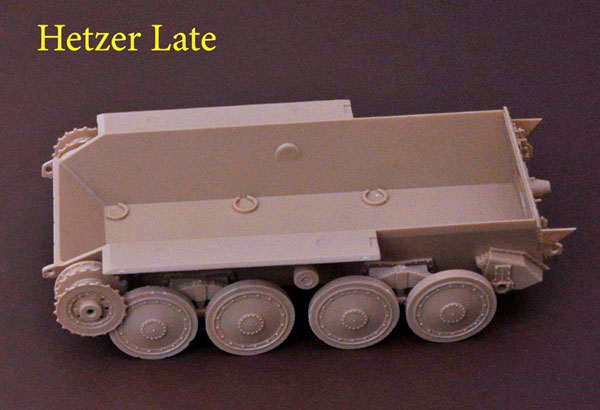Feature article by Bill Curtis March 2014
A note from Geoff…
Sometimes you just need a break and a change is as good as a rest!
It comes to many of us from time to time and I found the same a few years ago when doing a lot of work to the old 1:32 Hasegawa Bf 109E – somewhere it all just became a chore. I notice as I write that Les V has also realised that it’s better to press the pause button on his massive Missouri battleship build rather than push it and make mistakes. Sure, Les will carry on with his Missouri in the near future and you’ll be able to read the full build here in SMN, as you are doing with Bill’s 8.8cm Flak. We all look forward to that but in the meantime, back to Bill to take us through a very nice build of the Academy 38(t) Hetzer…
Getting underway
I had hit a point in a build that made it a chore rather than fun. This was even worse as the model was one I had waited for many years to come out in injection moulded plastic and I knew if I pressed on mistakes would follow.
So I pushed it to one side and looked for a quick build. I found the Academy Jagdpanzer 38(t) Hetzer awaiting a build slot. I had reviewed this kit the previous year and thought it well worth a straight from the box build.
Lower hull first

I washed the parts and once dry started the build with the lower hull, assembling the axle assemblies and putting the completed construction on a flat surface to ensure everything was square. When dry the wheels were dry fitted as these will be glued into place at a later stage. Note the rear axles were also not fitted as these would be loosely fitted and once the tracks were in place used to position them in the correct place and then glued.
The mantlet was textured as these parts were cast and the kit parts were smooth, well almost. Graham T and Geoff have created a good piece in your Techniques Bank with HD videos showing how to improve the cast texture on AFVs and you can see that here.
The build was straightforward and followed the instructions with a few exceptions which were mainly the wheels and tracks. Also included here was the wire cutters on the RHS rear fender which did not allow for painting as it is almost hidden by the hull and would be painted off the vehicle before fixing in place after the paint stage and before weathering.